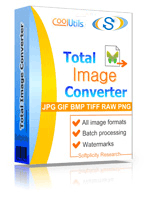1) Upload JIF file to convert
Drop files here, or Click to select
2) Set converting JIF to JPG options
3) Get converted file

 Total Image Converter
Total Image Converter
 JPEG, TIFF, PSD, PNG, etc.
JPEG, TIFF, PSD, PNG, etc. Rotate Images
Rotate Images Resize Images
Resize Images RAW photos
RAW photos Watermarks
Watermarks Clear interface
Clear interface Command line
Command line💾 Upload Your File: Go to the site, click on «Upload File,» and select your JIF file.
✍️ Set Conversion Options: Choose JPG as the output format and adjust any additional options if needed.
Convert and Download: Click 👉«Download Converted File»👈 to get your JPG file.




| File extension | .JIF |
| Category | File |
| Description | The Joint Photographic Experts Group (JPEG) Interchange Format (JIF) is a popular image file format that uses lossy compression techniques to reduce the size of digital images. JIF files are widely used on the internet and in digital photography. One of the main benefits of the JIF format is its ability to compress images without sacrificing too much image quality. This makes it ideal for sharing images online or storing them on devices with limited storage space. However, it's important to note that repeated editing and saving of JIF images can lead to a loss of image quality over time. JIF files support a wide range of color depths, ranging from 1-bit black and white to 24-bit color. They also support various color spaces, including RGB, CMYK, and grayscale. Another advantage of the JIF format is its compatibility with most web browsers and image editing software. This makes it easy to share and manipulate JIF images across different platforms and devices. In terms of file size, JIF images can range from a few kilobytes to several megabytes, depending on the level of compression used and the complexity of the image. As a general rule, higher compression levels result in smaller file sizes, but also lower image quality. Overall, the JIF format is a versatile and widely-used image file format that strikes a balance between image quality and file size. Whether you're a professional photographer or just sharing photos with friends and family, JIF images are a reliable and convenient option. |
| Associated programs | Total Image Converter |
| Developed by | Joint Photographic Experts Group |
| MIME type | |
| Useful links | |
| Conversion type | JIF to JPG |
| File extension | .JPG, .JPEG, .JPE, .JFIF, .JFI |
| Category | Image File |
| Description | JPG is the file format for images made by digital cameras and spread throughout the world wide web. Saving in JPG format an image loses its quality, because of the size compression. But at the end you have a much smaller file easy to archive, send, and publish in the web. These are the cases when an image's size matters more than image's quality. Nonetheless, by using professional software you can select the compression degree and so affect the image's quality. |
| Associated programs | |
| Developed by | The JPEG Committee |
| MIME type | |
| Useful links | More detailed information on JPG files |
In the realm of digital photography and graphic design, where precision meets aesthetics, the transformation from JIF to JPG is less of a metamorphosis and more of a clarification in nomenclature. This shift, subtle yet profound, underscores the nuances that often lie behind file extensions and their widespread perceptions.
For many, the term "JIF" might sound unfamiliar in the context of image formats. But dive a bit deeper, and one realizes that JIF is intrinsically linked to the more commonly known JPG or JPEG format. The journey begins with the Joint Photographic Experts Group, which crafted the JPEG standard, a methodology to compress images without compromising too much on quality. As with many technological standards, the actual file extension for this format is ".JIF." But, due to various factors, including software practices and user familiarity, ".JPG" became the more recognized and widely adopted extension, especially with Windows systems that previously used a 3-letter format for file extensions.
Converting from JIF to JPG is not about changing the essence of the image but aligning it with what has become the universally accepted standard. It's akin to translating a regional dialect to a more universally spoken language, ensuring broader understanding and acceptance, without altering the core message.
It's essential to understand that this conversion doesn't entail a shift in image quality. A JIF image and a JPG image, when viewed side by side, will appear identical in content and quality. The conversion is more about aligning with prevalent standards and ensuring that the image is accessible and usable across the broadest range of platforms and applications.
In wrapping up, the JIF to JPG journey is a testament to the subtle yet critical evolutions in the digital world. It reminds us that while the core essence of technology remains consistent, the wrappers and interfaces need to adapt, ensuring that they resonate with user expectations and global standards. In a world awash with data and content, these small shifts play a pivotal role in ensuring that information flows seamlessly, accessibly, and without lost nuance.